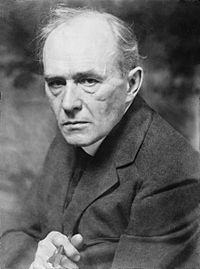Carl Akeley (Carl Ethan Akeley)

Carl Akeley was born in Clarendon, New York, and grew up on a farm, attending school for only three years. He learned taxidermy from David Bruce in Brockport, New York, and then entered an apprenticeship in taxidermy at Ward’s Natural Science Establishment in Rochester, New York. While at Ward’s Carl Akeley also helped mount P.T. Barnum’s Jumbo after the latter was killed in a railroad accident. In 1886 Carl Akeley moved on to the Milwaukee Public Museum (MPM) in Milwaukee, Wisconsin. Akeley remained in Milwaukee for six years, refining “model” techniques used in taxidermy. At the Milwaukee Public Museum, his early work consisted of animals found in Wisconsin prairies and woodlands. One of these was a diorama of a muskrat group, which is sometimes referred to as the first museum diorama; however, such dioramas, and dioramas depicting “habitat groups,” dated back well into the early 1800s, and were quite popular with taxidermists in Victorian England. In addition, he also created historical reindeer and orangutan exhibits. Akeley left the Milwaukee Public Museum in 1892 and set up a private studio from which he continued to do contract work, including three mustangs for the Smithsonian Institution for exhibition at the World’s Columbian Exposition. In 1896 he joined the Field Museum of Natural History in Chicago, where he developed his innovative taxidermy techniques, notably the creation of lightweight, hollow, but sturdy mannequins on which to mount the animals’ skins. He was also a prolific inventor, perfecting a “cement gun” to repair the crumbling facade of the Field Columbian Museum in Chicago (the old Palace of Fine Arts from the World’s Columbian Exposition. He is today known as the inventor of shotcrete, or “gunite” as he termed it at the time. Akeley did not use sprayable concrete in his taxidermy work, as is sometimes suggested. Carl Akeley also invented a highly mobile motion picture camera for capturing wildlife, started a company to manufacture it, and patented it in 1915. The Akeley “pancake” camera (so-called because it was round) was soon adopted by the War Department for use in World War I, primarily for aerial use, and later by newsreel companies, and Hollywood studios, primarily for aerial footage and action scenes. F. Trubee Davison covered these and other Akeley inventions in a special issue of Natural History magazine.
Carl Akeley specialized in African mammals, particularly the gorilla and the elephant. As a taxidermist, he improved on techniques of fitting the skin over a carefully prepared and sculpted form of the animal’s body, producing very lifelike specimens, with consideration of musculature, wrinkles, and veins. He also displayed the specimens in groups in a natural setting. Many animals that he preserved he had personally collected. His wife, Mary Jobe Akeley, married him two years before he died. He had previously been married to Delia J. Akeley (1875–1970) for nearly 20 years. Delia Akeley accompanied him on two of his biggest and most productive safaris to Africa in 1905 and again in 1909. Delia later returned to Africa twice under the auspices of the Brooklyn Museum of Arts and Sciences. She organized and led both trips and lived for several months in the Ituri Forest with Pygmies.
Born
- May, 19, 1864
- USA
- Clarendon, New York
Died
- November, 18, 1926
- Mt. Mikeno, Belgian Congo
Cemetery
- Carl Akeley Burial Location
- Goma, Nord-Kivu, Congo, Democratic Republic of


